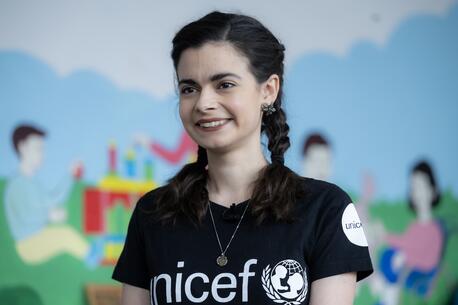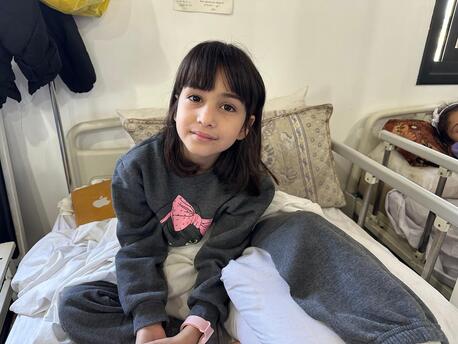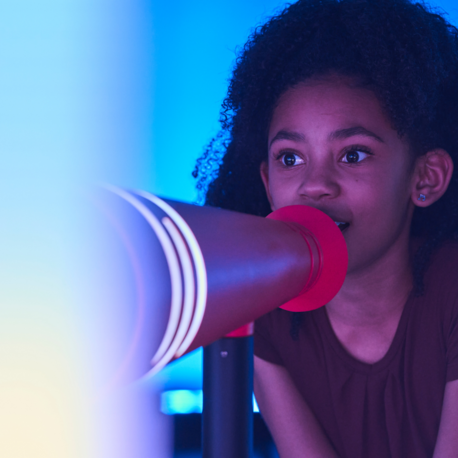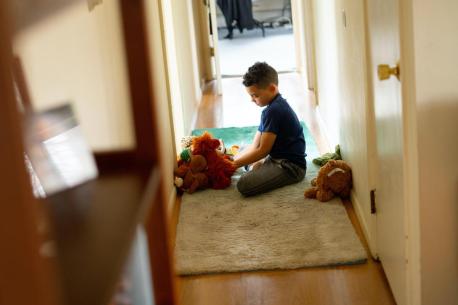
Back to School?
Communities all across the U.S. and around the world are facing daunting questions around how to keep kids learning and thriving in a pandemic. For many, “back to school” means more remote learning. UNICEF provides some guidance for parents navigating the uncertainty.
In late July, there were still more than 1 billion students out of school due to nationwide school closures in response to COVID-19.
At the same time, 70 countries had announced plans to reopen their schools, and hundreds of millions of students started returning to their physical classrooms — with mixed results. While some reopenings have proceeded smoothly so far, others have been a disaster. As reported by Politico, the most successful countries staggered their reopenings, starting with the youngest children first — and even then there have been problems.
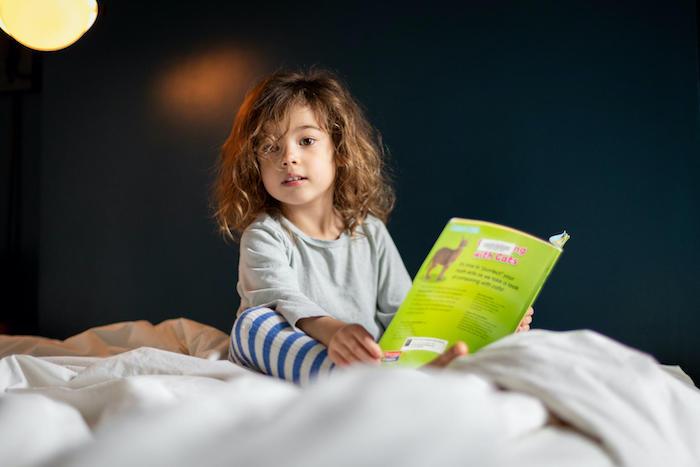
Margot, 4, reads a book at home in New York City, on a weekday she would normally be at day care. The city shut down in mid-March as COVID-19 cases spiked. © UNICEF/UNI325486/Bajornas
With so many variables at work — a community’s case load and local testing capacity, whether physical distancing and other virus prevention measures have been adopted and are being enforced — there is no one-size-fits-all approach.
In most countries, decisions regarding how and when to reopen schools will be made by national or state governments, often in discussion with local authorities weighing the risks and benefits for both public health and education, among other factors. The U.S. CDC’s deep dive into those risks and benefits also notes that the “best available evidence” indicates that COVID-19 poses relatively low risks to school-aged children. On the other hand, new information is emerging nearly every day, including new research indicating children may be more vulnerable than previously thought.
UNICEF urges decision makers to keep the best interests of every child at the center, using the best available evidence. Simply put: Schools should reopen as soon as possible — as the closures have caused immeasurable disruption to the lives, learning and wellbeing of children and youth around the world, while vulnerable children have also lost access to critical nutrition, protection and other supports — but they should only be reopened when it is safe for students, teachers and other school staff.
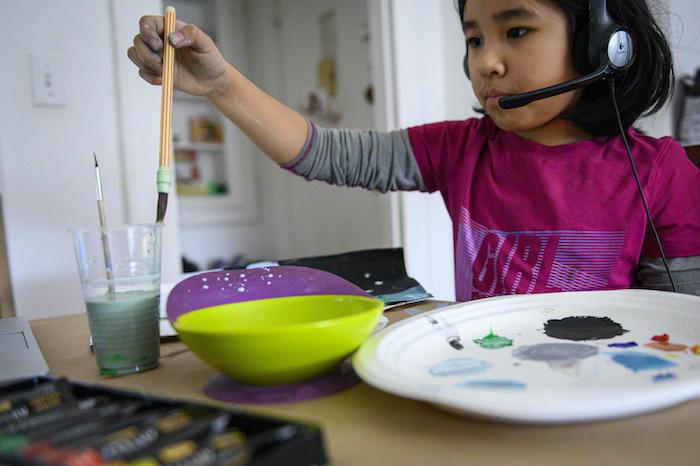
Yolanda, 9, participates in a remote art class from home in New York City. © UNICEF/UNI320492/Elias
For many schools, particularly in the U.S., that means not opening full time or for all grades, at least not yet. Many schools are implementing a hybrid, or blended learning model, which is a mix of classroom instruction and remote education: self-study through take-home exercises, radio, TV or online learning.
UNICEF offers a host of helpful tips for parents and educators. As Robert Jenkins, UNICEF’s Global Chief of Education has pointed out, the challenge is to determine the right learning tool for each context. Live instruction delivered remotely is often not possible, and requires fixed scheduling. Families still living under quarantine or other restrictions need flexibility now more than ever. “The key is to start with the learning outcome and then work backwards,” Jenkins told UNICEF USA in a recent interview.
UNICEF advises parents to support children’s learning at home by creating a routine around school and schoolwork. Structure helps kids who are feeling restless or who are having trouble focusing. Parents can make learning playful by incorporating it into everyday activities like cooking, family reading time and games.
“Take your time,” Jenkins says. “Start with shorter learning sessions and make them progressively longer. Have open conversations. Encourage your child to ask questions and express their feelings.”
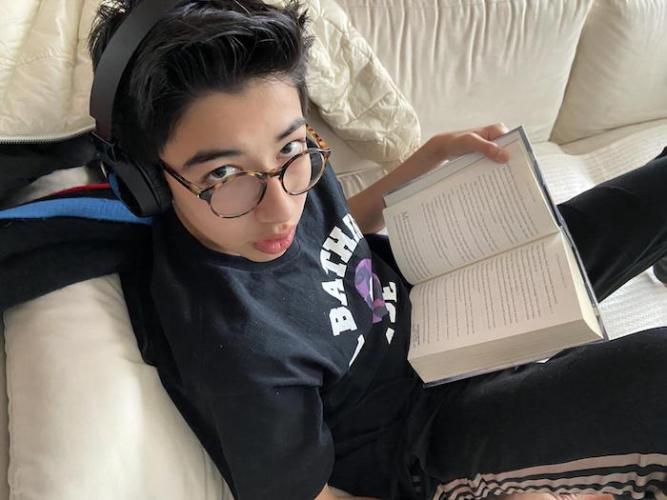
Jack, 14, learning at home in New York City, where schools closed in mid-March to prevent further spread of COVID-19. © UNICEF/UNI313115/Adelson
Other UNICEF tips for parents:
- Establish rules about how, when and where the internet can be used, setting up parental controls where necessary, particularly for young children.
- Remember that children deal with stress in a crisis differently. Let your child know that it’s not only OK but normal to feel frustrated or anxious given the current situation.
- Join a parent or community group to connect with other parents who are going through the same experience to share tips and get support.
And if your school is planning to reopen, parents should be asking questions like:
- What steps has the school taken to help ensure the safety of students?
- How will the school support the mental health of students and combat any stigma against people who have been sick?
- How will the school handle referrals for children who may need specialized support?
- Will there be any changes to the school’s safeguarding and bullying policies?
- Will there be any parent-teacher committees or other networks for parents to help support school safety efforts?
Bridging the ‘digital divide’
The pandemic crisis has put into stark relief the deep inequalities that persist in children’s access to school, in learning outcomes and in digital connectivity — including in the U.S., where research shows that COVID-19 will likely exacerbate already significant achievement disparities for poor and minority students.
Addressing these inequalities has become ever more urgent. UNICEF USA is advocating for universal broadband access in the U.S. so that all children — regardless of income or zip code — can participate in online learning. This effort coincides with UNICEF's global call to action to provide 500 million children with digital access by the end of 2021.
UNICEF USA is also advocating in support of the Keeping Girls in School Act, which, if passed into law, would strengthen U.S. support for education programs for girls around the world, as girls are most at risk of losing education and protection during the pandemic.
Learn more about UNICEF’s guidance around reopening of schools.
UNICEF is working nonstop to respond to the effects of COVID-19 and school closures. Your contribution can make a difference.
Top photo: Luka, 8, plays with stuffed animals in between completing schoolwork on his first day learning from home after his school in Connecticut closed due to the novel coronavirus outbreak. The school provided all students and parents with home-based learning materials and assignments. Luckily, Luka’s parents are both currently teleworking and able to support him. © UNICEF/UNI313409/McIlwaine
